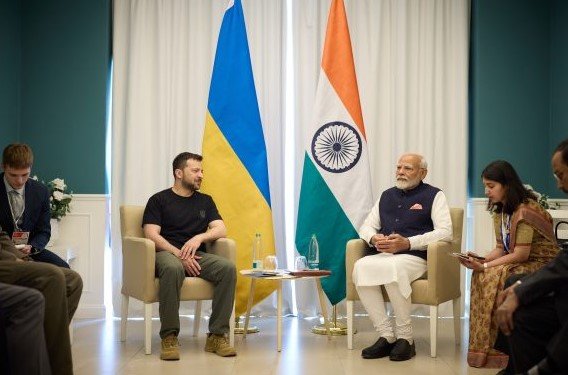Prime Minister Narendra Modi touched down in Calgary on Monday evening for the G7 Summit at Kananaskis. This marks his first visit to Canada in ten years and comes at a time when international attention is fixed on security, energy resilience, and fast-moving advances in AI and quantum tech.
The Summit, being hosted on June 16-17, gathers leaders from the world’s most powerful economies. But the shadow of regional tensions and Modi’s recent military action against cross-border terror camps makes this more than just a routine diplomatic stop.
Stakes High After Operation Sindoor
Just weeks before Modi boarded the plane to Canada, India launched a precision strike dubbed Operation Sindoor. The April 22 Pahalgam attacks, which killed 17 people including civilians and security personnel, prompted a swift military response targeting terror infrastructure in Pakistan and Pakistan-occupied Kashmir.
That backdrop has turned Modi’s presence at the G7 into a stage not just for policy but also posture.
Two senior officials confirmed Modi will privately brief allies on India’s latest counter-terror approach. It’s unclear whether the topic will surface formally at the Summit, but chatter among diplomatic aides suggests it’ll likely be discussed behind closed doors.
A single-sentence paragraph to break the flow.
The timing isn’t lost on anyone. With NATO sharpening its stance on hybrid threats, and India strengthening ties with key Western allies, the move could signal a recalibration of India’s role in global security dynamics.

G7’s Spotlight on AI, Energy, and Quantum Frontiers
This year’s G7 isn’t just about politics. It’s also about power—literally. Leaders are expected to deep dive into the AI-energy nexus, one of the hottest and most urgent topics on the global table.
India’s Ministry of External Affairs said Modi will specifically engage in dialogues around:
-
AI’s impact on energy grids and climate mitigation strategies
-
Risks and rewards of quantum computing and its implications on encryption
-
Building cross-border innovation coalitions with emerging economies
That’s a lot of buzzwords. But the core issue is simple—tech is moving fast, and so are the geopolitical consequences.
Modi is also expected to pitch India as a responsible partner in AI governance, highlighting its Digital India initiatives and expanding semiconductor ecosystem.
A one-liner just to keep the human flow natural.
Tech insiders in New Delhi see this as a soft-power moment for India, especially after the recent AI regulatory chaos in the EU and America’s own struggles with Big Tech governance.
Bilateral Meetings: More Than Just Handshakes
While the Summit’s main events grab headlines, the real work often happens in the margins. And Modi’s calendar is packed.
So far, confirmed meetings include one-on-one sit-downs with:
-
Canadian PM Mark Carney
-
German Chancellor Annalena Baerbock
-
French President Emmanuel Macron
-
Japanese PM Fumio Kishida
Sources say a quiet meeting with U.S. President Joe Biden is also being squeezed in, though it hasn’t been officially confirmed. What’s expected? Talks on defense deals, trade tweaks, and yes, China.
Each of these talks will cover different angles—from Indo-Pacific security to energy diversification. Trade officials traveling with the Prime Minister told reporters off the record that a few “significant commercial announcements” are likely post-summit.
One sentence here, keeping it sharp.
There’s also the delicate matter of Canada’s recent political tensions with India over diaspora activism and diplomatic protocol. Modi’s outreach to Carney, who took office in 2024, could reset that frosty equation.
Modi’s Sixth G7: More Confident, More Calculated
This isn’t Modi’s first G7 rodeo. But it may be the most strategically important one yet. With global power balances shifting, the Indian Prime Minister walks into Kananaskis as one of the few leaders with leverage in both East and West.
Here’s a look at Modi’s previous G7 appearances:
| Year | Location | Key Focus for India |
|---|---|---|
| 2018 | Canada (Quebec) | Climate finance, WTO reform |
| 2019 | France (Biarritz) | Digital economy, ocean health |
| 2021 | UK (Cornwall) | Vaccine equity, Quad ties |
| 2022 | Germany (Elmau) | Ukraine war, food security |
| 2023 | Japan (Hiroshima) | Nuclear non-proliferation |
| 2024 | Italy (Apulia) | Energy access, Global South |
This sixth appearance suggests continuity—and more confidence. Unlike the earlier years when India was often seen as a guest, now it’s considered a critical partner on key global flashpoints.
It’s no longer about just showing up.
Modi is bringing his diplomatic toolkit to the table, knowing full well the world wants to hear what India has to say. And more importantly—what India plans to do.
Global Distractions, But Regional Storm Clouds Remain
Even as leaders sip tea and pose for group photos in Kananaskis, the temperature back home remains volatile.
Security experts warn that Pakistan may respond to Operation Sindoor with another round of asymmetric skirmishes. Though the cross-border tension hasn’t escalated further since the strikes, India’s defense posture remains on high alert.
And then there’s China.
Modi’s participation in G7 forums that often echo the Indo-Pacific strategy frameworks hasn’t gone unnoticed in Beijing. Chinese state media has already criticized India’s “alignment with Western blocs.”
That’s standard playbook stuff—but the stakes are higher now.
At the same time, India continues to court the Global South, maintaining balance in its non-aligned strategic philosophy. That’s a diplomatic juggling act, and G7 will test how steady Modi’s hands are.
